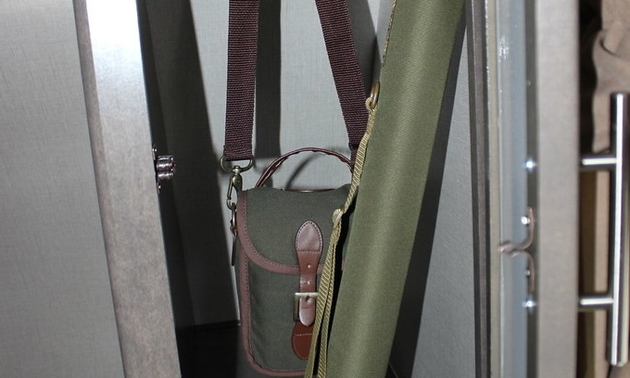Stocking your RV for fly fishing
If you’re a camper who loves to go fly fishing, find ways to use minimal gear for maximum versatility

Fly fishing can be a gear intensive activity, one in which you can become so deeply immersed you end up with more gear than a fly shop. On the other hand, RV travel demands that you pay attention to your available space and weight. To mix the two activities can be a challenge. I recommend thinking about RV fly fishing the same way a backpacking fly fisher does: minimal gear with maximum versatility. With an RV you just have a much larger backpack! While you may be tempted to load up with tons of gear, don’t forget you need to leave room and weight for food, water, clothing etc, especially if there are more people than just yourself on the trip. In addition to leaving room for your camping supplies, your fellow travellers might require room for fishing gear or their hobby of choice. With those requirements in mind I offer the following recommended items of fly gear.

Basic tackle for fly fishing:
- Multi-piece fly rod suitable to the species being pursued. The multi-piece rod is easy to stow in your RV. Either a three- or four-piece rod will suffice. For trout in small streams or ponds I like a three- or four-weight rod; for trout and bass in larger waters, a five to six/seven-weight rod is a great choice. Pike require a bit heavier rod—eight-weigh tor higher. For an all around rod, I would choose a six- or seven-weight rod.
- Line: I prefer a weight-forward floating line for most fishing matched to the rod. On smaller waters I use a double taper line as it is easier to cast in close spaces.
- Reel: I suggest lightweight with disc drag or, on a smaller reel, a click-and-pawl drag for that cool, classic sound when a fish runs.
- On occasion, I will add an extra spool loaded with either a double taper floating line or a sinking line. Alternatively, you can use a double taper line and add an Instant Sink Tip Kit to the selection. These kits consist of one or more 12-inch to 60-inch lengths of sinking line with a loop at each end to connect your line and leader. These kits take up way less space than an extra spool/line.
- The next item of terminal tackle you require is the leader. The leader connects your line to the fly. I carry up to six spare leaders in various tippets.
- Flies: I carry two or three small boxes holding dry flies, wet flies and streamers. Carry patterns common to the waters being visited along with a few standard flies and you won’t go wrong. If there are special flies for the area, it is a simple matter of visiting the local fly shop, something I highly recommend.
Other important fly fishing items:
- Fly floatant, small container: this product will help your dry flies to remain afloat longer. It is often a wax or paste that is applied to the fly prior to fishing.
- Forceps will help in removing a fly from the fish without injuring it. Pliers are a better choice for large fish with sharp teeth such as pike.
- A lightweight knife: I carry a Havalon replaceable blade knife. It is handy for trimming leaders or cleaning the odd fish. Extremely light to carry, this knife uses a surgical type blade that is scary sharp.
- Toss in a couple of spare blades as they take up almost zero room.
- Non-toxic split shot to help get your fly down: avoid lead as it is not good for the environment and, in fact, is illegal to use in national parks.
- A small shoulder pack will easily carry everything except the waders.
These are the basic pieces of fly fishing gear I carry with me. They allow me to get out there and have fun on the road. And remember, where legal, keep some fish for a traditional Canadian shore lunch—you won’t regret the memories you will make!












